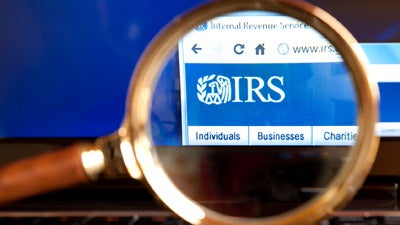
In 2020, to combat the economic effects on small businesses caused by the COVID-19 pandemic, new legislation/executive actions drastically changed the format of Form 941, expanding it from two to three pages, and adding 58 new data fields. Many the new relief measures were extended for businesses into 2021 (but not all).
While the first quarter 2021 version of Form 941 maintains most of the new, more complex structure, there are a few changes that business owners and tax professionals should be aware of. In general, the first quarter 2021 changes to Form 941 relate to the expiration of Social Security tax deferral provisions and/or tweaks to existing relief provisions.
Form 941, Part 1 Changes
Line 11c. Instructions for Line 11c, which is used to report the nonrefundable portion of the employee retention credit, were updated to reflect that the calculation of the credit was redefined under the 2021 Consolidated Appropriations Act to be 70% of qualified wages paid from Jan. 1, 2021 to June 30, 2021 [Now Dec. 31, 2021 under Biden’s $1.9 Trillion COVID Relief Package], up to a maximum of $10,000 per employee per quarter. The amount of the credit for wages paid from March 13, 2020, to Dec. 31, 2020, was 50% of those wages, up to a maximum of $10,000 per employee for all quarters.
Line 13b. The form designates the line as reserved for future use, as it no longer is to be used to report amounts of deferred employer and employee portions of Social Security tax. Instructions for Line 13b were removed.
Line 13e. The form and instructions for Line 13e were updated to remove references to Line 13b.
Line 24. The line is reserved for future use. The line previously was used to report the deferred amount of the employee portion of Social Security tax. Instructions for Line 24 were removed.
The instructions also include a reminder that employers must pay at least half of deferred amounts of the employer portion of Social Security tax by Dec. 31, 2021, and remaining amounts by Dec. 31, 2022. Additionally, employers must ratably withhold and send deferred portions of the employee portion of Social Security tax from Jan. 1, 2021, to Dec. 31, 2021.
Worksheet 1: Credit for Qualified Sick and Family Leave Wages and the Employee Retention Credit
Worksheet 1 helps users determine the refundable/nonrefundable portion of the COVID-19 Credits. It is not filed, but kept in your records. As part of the filing process, PayMe/TaxMe automatically creates this worksheet.
Line 1j(i). Section 303(d) of the Taxpayer Certainty and Disaster Tax Relief Act of 2020 allows for a new payroll tax credit for certain tax-exempt organizations affected by certain qualified disasters not related to COVID-19. This new credit is claimed on new Form 5884-D and may be available to certain employers during the first and second quarters of 2021. New line 1j(i) was added to account for this credit.
Line 2a(iii). This line was added to capture qualified sick leave wages excluded from the definition of employment under section 3121(b).
Line 2e(iii). This line was added to capture qualified family leave wages excluded from the definition of employment under section 3121(b).
Qualified sick & family leave wages that meet an exclusion under 3121(b) are not subject to social security and Medicare Tax and historically were excluded from Form 941 reporting. However, these new lines were added because they are eligible for credit calculation in Worksheet 1. Thus, you have some qualified sick leave subject to social security and Medicare Tax [Step 2a], some qualified sick leave only subject to Medicare Tax because the Social Security limit has been reached [Step 2a(i)], and now some qualified sick leave that are not subject to either social security or Medicare Tax [Step 2a(iii)]. The same principal applies to family leave wages.
Lines 3c and 3d lines were updated to eliminate reference to qualified wages and health care expenses that were applicable only in 2020. The remaining steps of Worksheet 1, Step 3 were renumbered/tweaked to reflect this removal.
In particular, new line 3d, which is used to determine the amounts of the credit for qualified sick and family leave wages and the employee retention credit, was updated so that qualified wages for the employee retention credit are multiplied by 70%, up from 50%.
Form 941, Schedule B
Deferral of social security tax expired. The deferral of the deposit and payment of the employer share of social security tax for deposits and payments due on or after March 27, 2020, and before January 1, 2021, as well as the deferral of the withholding, deposit, and payment of the employee share of social security tax on wages paid September 1, 2020, through December 31, 2020, have expired. Any references to these deferrals have been removed from the Form 941, Schedule B instructions.
Employer Compliance & Form 941
To help employers, PayMe/TaxMe have automated the Form 941 filing process to accommodate all the recent changes (including the COVID-19 changes/recent tweaks). Easy. Accurate. Secure.
If you need to e-file Form 941, don’t wait.
4535 Views












